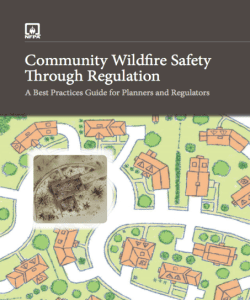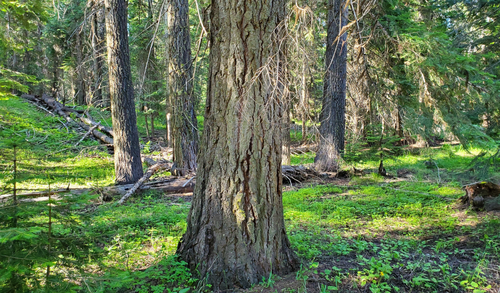
CLEVER HEADLINE AWARD: “C’est levee: Coconino NF has no plans to repair Lower Lake Mary levee.”
FEATURED RECOMMENDATIONS
Some federal court cases are heard by a “magistrate” judge, who then makes recommendations to the judge who will formally issue an opinion. I haven’t often seen the judge change the recommended outcome of a case. (Maybe someone can explain this a little better.) There are two very interesting recommendations pending that I am aware of. Both would deny motions to dismiss by the agency.
Magistrate’s recommendation in Cascadia Wildlands v. Adcock (D. Or.)
On April 21 the magistrate recommended to the district court that it not dismiss this NEPA challenge to Oregon BLM’s Siuslaw Harvest Land Base Landscape Plan and EA. The BLM undertook the Landscape Plan pursuant to the Northwest Resource Management Plan (“RMP”), and it lays out a multi-decade strategy for timber harvest, but does not authorize particular projects. Standing to sue is routinely established by environmental groups for public land litigation. However, the BLM argued here that plaintiffs did not have standing because the Landscape Plan is a programmatic decision, and does not decide precisely where within the project area the BLM will ultimately log, and it therefore cannot cause an imminent injury to Plaintiffs.
The magistrate disagreed: “An agency need not have authorized an implementation action for a court to find that an area will surely be affected where “there is no real possibility” that agency will not pursue any site-specific projects under the planning framework.” Even though specific units had not been selected, the decision represents a commitment because the EA states that the agency would not be authorized to elect a non-logging alternative for a specific project because it “would not be in conformance” with the RMP. Plaintiffs were not required to tie their injuries to specific units within the project area to establish standing, so the plan’s lack of site-specificity did not prohibit them from establishing standing. The claim should also be considered ripe for judicial review because “the imminence or occurrence of site-specific action is irrelevant to the ripeness of procedural injuries (such as NEPA violations), which are ripe and ready for review the moment they happen.”
(This “program” appears to be similar to “condition-based” management “projects” in the Forest Service, but it’s less clear there would be no additional NEPA for specific projects.) (The article includes a link to the recommendation.)
Magistrate recommendation in Blue Mountains Biodiversity Project v. Wilkes (D. Or.)
In October, 2022, plaintiffs challenged the South Warner Project on the Fremont-Winema National Forest for employing the Eastside Screens amendment adopted in January, 2021 (which is under separate litigation). Although the Ochoco National Forest Supervisor was initially listed as the Responsible Official for the amendment, the Decision Notice was signed by then-Under Secretary for National Resources and Environment James Hubbard.
On April 27, the magistrate judge concluded that, “When the Under Secretary is not involved with a proposed plan amendment before signing a Decision Notice, the Under Secretary cannot later retroactively claim that the Under Secretary proposed that plan amendment by simply signing the Decision Notice,” and doing so, “does not exempt a lower ranking official’s proposed plan amendment from the objection process.” (Objection regulations create this exemption if the Under Secretary “proposes” an action. The failure to allow objections is also part of the broader Eastside Screens lawsuit.) (The article includes a link to the recommendation.)
THE MONTH OF THE (WILD) HORSE
New lawsuit: Horses of Cumberland Island v. Haaland (N.D. Ga.)
On April 12, animal rights groups and a Cumberland homeowner sued the National Park Service seeking removal of Cumberland Island National Seashore’s feral horses. The NPS management has allegedly caused harm to both the horses and the natural resources of the Seashore, violating the National Park Service Organic Act, Wilderness Act and Endangered Species Act (related to loggerhead sea turtle critical habitat.)
New lawsuit: Center for Biological Diversity v. U. S. Forest Service (D. Ariz.)
On April 27, the three wildlife-oriented organizations and three sportsman’s groups sued the Forest Service over its management of wild horses along the Salt River on the Tonto National Forest. The parties allege that the Forest violated NEPA by failing to consider the environmental impact of a 2017 agreement (and a February update) with the Salt River Wild Horse Management Group that allegedly allows continued overgrazing to harm wildlife species. The carrying capacity has been found to be as low as 20 horses, and the current population is estimated to be as high as 600. (The article includes a link to the compliant.)
New lawsuit: American Wild Horse Campaign v. Stone-Manning (D. Wyo.)
On May 10, a coalition of wild horse advocates, environmentalists and academics filed suit against the U.S. Department of the Interior over a land use plan amendment that would eliminate 2.1 million acres of wild horse habitat in the Red Desert area of and slash by one-third the allowed population of wild horses in the state Wyoming. The plan allegedly violates the Wild Free-Roaming Horses and Burros Act, the Administrative Procedure Act, and the National Environmental Policy Act, arguably to promote livestock grazing. (The article includes a link to the complaint.)
OTHER LITIGATION
Supreme Court accepts Loper Bright Enterprises v. Raimondo
The Supreme Court has announced that it will hear a case about commercial fishing rules, which could have far-reaching effects on federal agency discretion to implement laws. The Court will consider repealing the “Chevron Doctrine,” which states that courts should defer to the government’s experts’ interpretation of ambiguous statutes. Much of the concern is about the future ability of government agencies to regulate the private sector, and the effect on land management agencies may be less obvious. However, the Chevron Doctrine has been used in relation to the Forest Service’s interpretation of its Organic Act, the Wilderness Act, ANILCA, and the Clean Water Act. At least one court has granted Chevron deference to the Forest Service interpretation of NFMA (public comment requirements), and NEPA (interpretation of “extraordinary circumstances”). The Fish and Wildlife Service’s interpretations of the Endangered Species Act could also be affected.
New lawsuit: Center for Biological Diversity v. U. S. Fish and Wildlife Service (D. Ariz.)
On May 4, the plaintiff sued the Fish and Wildlife Service for failure to respond to its 2019 petition to prohibit all use of pesticides in critical habitat for listed species unless it has previously consulted with the Environmental Protection Agency to assess the pesticides’ impact on listed species (or if the pesticides are used to control invasive species or promote human health and safety). The lawsuit complaint asks the court to order FWS to respond to the petition within 90 days. (The article includes a link to the complaint.)
Court decision in Neighbors of the Mogollon Rim v. U. S. Forest Service (9th Cir.)
On May 5, the circuit court reversed a district court decision and partially vacated the EA (with respect to the pasture at issue) used by the Tonto National Forest to authorize grazing on several allotments, parts of which had been vacant for many years. The court held, “The Forest Service failed to give full and meaningful consideration to plaintiff’s proposed alternative, which maintains the status quo as to the closure of the Colcord/Turkey Pasture to grazing.” The court rejected the Forest Service defense that it was unnecessary because it was “within the range of” the two alternatives considered (action and no-action). It also rejected the agency’s attempt to assign responsibility to neighboring landowners for the effects of trespassing cattle on their lands in the NEPA analysis. (The article has a link to the unpublished memorandum opinion.)
New lawsuit
On May 5, the Ute Indian Tribe of the Uintah and Ouray Reservation filed a federal lawsuit accusing state agencies of racially discriminatory conspiracy to prevent the tribe from purchasing ancestral land just outside its reservation. In 2018, the Utah School and Institutional Trust Land Administration put it up for sale, but plaintiffs allege (based on a whistleblower account) that their winning bid was undermined by the losing bidder, the Utah Department of Natural Resources who wanted to manage it as a wildlife preserve with public access.
Notice of intent to sue
On May 8, The Center for Biological Diversity and Cascadia Wildlands notified the Federal Emergency Management Agency (FEMA), of their intent to sue with regard to FEMA’s decision to fund the repair and reopening of Cook Creek Road in the Oregon Coast Range. They are concerned about Oregon Department of Forestry timber sales that would be enabled by the project, and their effects on Oregon Coast coho and marbled murrelets, both of which are protected as threatened species under the Endangered Species Act. (The article includes an indirect link to the notice.)
Notice of intent to sue
On May 10, The State of Idaho sent a notice of intent to sue to the U.S. Fish and Wildlife Service over the Biden Administration’s failure to remove grizzly bears from the endangered species list. The State had previously submitted a petition to delist the grizzly bears because the 1975 listing decision applies the ESA’s protections to an entity that is not a “species” as defined by the Act because it applied only to the “lower 48” population. (This article includes a link to the Notice.)
Notice of intent to sue
The Flathead-Lolo-Bitterroot Citizen task force has sent a 60-day notice of intent to sue the United States Fish and Wildlife Service as well as the Montana Department of Fish, Wildlife and Parks because it says that as the state expanded trapping, snaring and hunting regulations, it failed to take safety precautions that would protect grizzly bears.
LEGISLATION
The 2018 appropriations bill exemption of forest plans from Endangered Species Act consultation when a new species is listed or critical habitat designated, which resulted from the “Cottonwood” litigation over Canada lynx, expired in April. On March 23, The House of Representatives held a hearing on a bill that would specify there is not a need to reinitiate such consultations. A similar bill was introduced in the Senate last session but not considered by the full Senate. The attorney behind the Cottonwood decision discusses this legislation here.
On May 11, the U.S. Senate passed two Congressional Review Act (CRA) resolutions that would do Biden-administration rules implementing the Endangered Species Act. One was the listing of the northern long-eared bat, and the other allows consideration of future conditions when designating critical habitat. According to Defenders of Wildlife, along with a recent similar resolution involving the listing of the lesser prairie chicken the CRA “has never previously been used on the Endangered Species Act.” President Biden has vowed to veto both resolutions should they pass the House.
OTHER THINGS
FWS response to Desert Survivors v. U. S. Department of the Interior (N.D. Cal.)
On April 27, the Fish and Wildlife Service announced that it is reinstating its 2013 proposed rules to list the Bi-State distinct population segment of greater sage-grouse as threatened under the Endangered Species Act and to designate critical habitat, and that it is reopening the comment period. The court had vacated the agency’s withdrawal of this proposed rule in March, 2020. Species proposed for listing must be addressed in land management agency decision-making where they are present
The Wyoming Supreme Court has upheld Albany County’s 2021 approval of the proposed Rail Tie Wind Project on private land by rejecting a local landowner’s bid to block the project. The challenge was to the county permitting process rather than the federal EIS, and garnered objections from close to 50 local landowners. Alternative energy will clearly not be immune to NIMBY challenges. (The article includes links to other news about Wyoming’s transition to renewable energy.)





